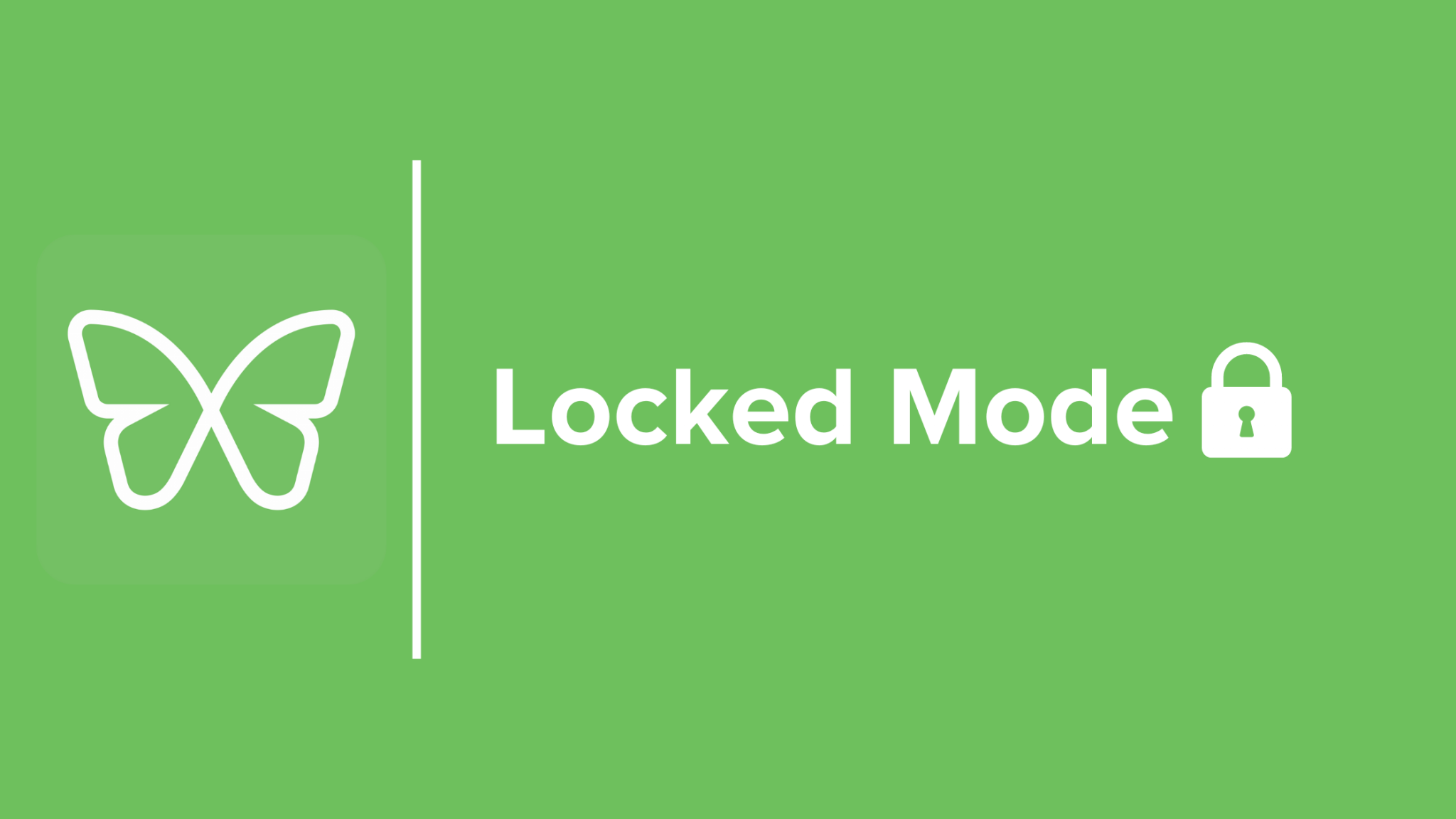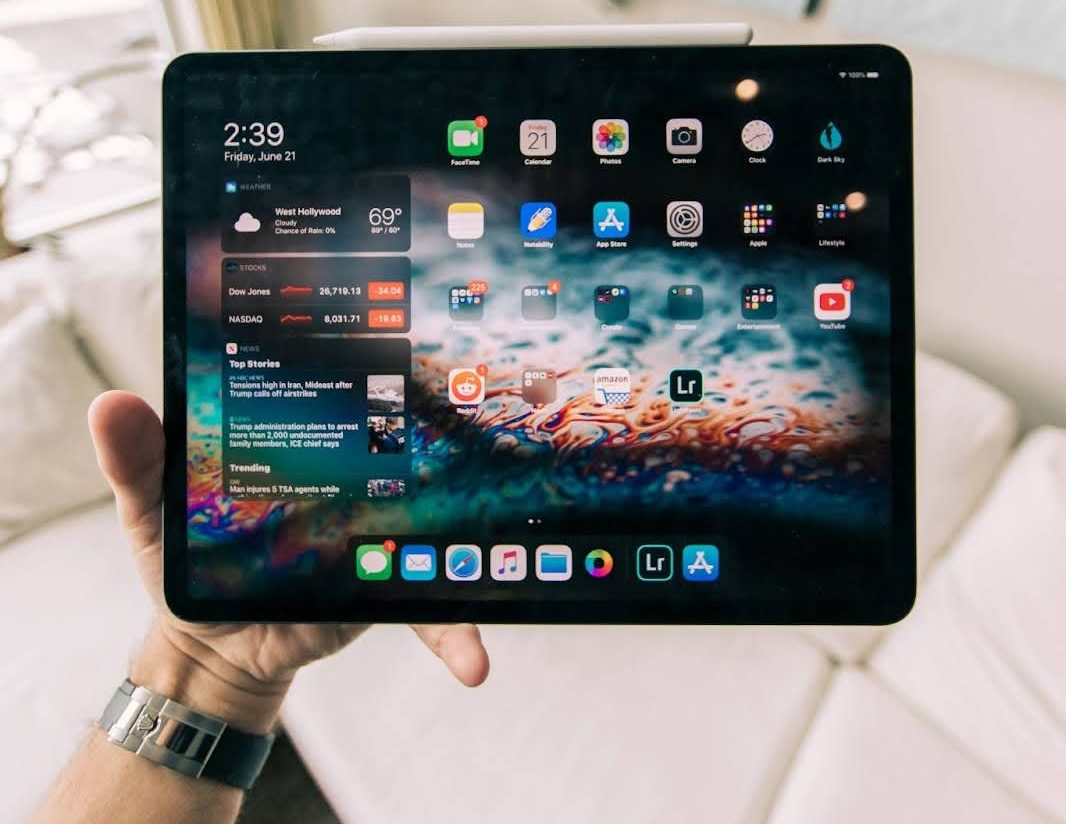The Freedom of an Indistractable Team: How to Unlock Performance and Wellbeing

Distractions often kill productivity in the workplace.
From social media notifications to chatty coworkers, staying focused and creative is difficult. As our friend Nir Eyal points out, becoming “indistractable” is a superpower, and indeed Nir invented this word to help us grasp the importance and power of developing this skill. To learn more about the concept of becoming Indistractable, read and listen to our interview with Nir here, or better yet – read the book!
What we’re excited about is that it’s possible to become indistractable and boost productivity for your employees as a team, empowering them to improve their ability to focus and accomplish more in less time…in a mindful and healthy way.
Time management techniques and productivity tools like Trello or Asana can only get you and your team so far—how can you actually remove distraction in the workplace for good, and bulletproof organizational productivity? Besides encouraging employees to take breaks to recharge, prevent burnout, and finetune creative energy throughout a workday, fostering a culture of focus and productivity can help teams achieve success and enjoy a healthier work-life balance.
Diminished productivity and decreased employee satisfaction are just two of the problems distractions bring into the workplace. Managers who handle these obstacles with honesty, transparency, and humor allow their teams to overcome the constant tension between giving in to such distractions, and being focused. Team-building exercises and challenges may also improve organizational productivity and employee well-being by making their work environment more human, enjoyable, and connected. Tools like Freedom for Teams offer additional aid to fight digital distractions.
The Problem of Distractions

The prevalence of distractions in the modern workplace
Distractions abound in the modern workplace. There are smartphone notifications, emails, chat messages, and other interruptions that poke and prod at our focus throughout the day. The environment you work in also affects focus, as does the approach to project management. Meetings, disorganization, and multitasking are some other common culprits.
Common Workplace Distractions
This isn’t an exhaustive list of work-related distractions, of course. Take a look at this list, and observe your team’s workflow and environment (and your own!) to see what changes can be made today.
- Email Notifications: Probably one of the most persistent and distracting workplace interruptions, the constant influx of notifications can break concentration and decrease productivity.
- Phone use: A survey from Journal of Accountancy notes that individuals check their phones an average of 74 times a day. This constant need for distraction can lead to decreased productivity and increased stress levels.
- Social Media: Endless scrolling through feeds, responding to notifications, and checking messages decreases focus (obviously!), but also may give the social media user a slight dopamine rush that results in less motivation and enjoyment for the task at hand.
- Disorganized Workspaces: When things are not in their proper place, it can be difficult to have organized thoughts, or the ability to pay attention for longer periods of time without fiddling around with clutter. Employees may spend valuable time searching for documents, tools, or other materials they need to do their job.
- Micro Management: When managers constantly check up on their team’s every move, it can lead to a lack of autonomy, decreased morale, and reduced productivity.
- Meetings: Both necessary and helpful, meetings can also significantly take away time that could be spent in more meaningful, mindful ways.
- Phone Calls: Employees may feel the need to drop what they’re doing to answer the phone, even if it means interrupting their workflow.
- Background Noise: Even low-level noise, like humming from equipment, can distract and reduce productivity. Noise-canceling headphones, earplugs, or Focus Sounds for deep work help to block out distractions can be helpful here.
- Multitasking: Doing more than one thing at a time may seem like an efficient way to get more done, but it often has the opposite effect, leading to decreased productivity and lower quality work.
According to a CareerBuilder survey, the most common productivity killers at work include text messaging, gossiping with coworkers, and social media. However, there have also been some stranger distractions reported, such as a coworker who eats loudly and a desk positioned towards a window with a distracting view.
How distractions can negatively impact productivity
Studies have shown that even small interruptions, such as a notification pop-up, can disrupt focus and cause a significant decrease in productivity. For many employees, it could take up to 25 minutes to regain full focus after a single distraction, however brief. Lack of focus isn’t all, however. Other negative consequences of workplace distractions include increased forgetfulness and stress.
In 2013, a Michigan State University study discovered that brief distractions, even something as innocent as a text message from a buddy, can lead to almost double the mistakes as the employee works on a project, compared to not having been distracted.
The connection between distractions and employee well-being
Continuously switching attention between tasks can cause mental exhaustion and increase stress levels. In the long term, this can lead to burnout and a decrease in job satisfaction.
Distractions can also have long-term effects on an employee’s career success. The ability to focus and stay on task is critical for professional growth and development; without these skills, employees may struggle to complete projects and assignments, hindering their ability to advance in their careers.
Furthermore, distractions can lead to feelings of disengagement and dissatisfaction, which can contribute to a negative work environment. A study on the negative effects of interruptions on work performance found that people interrupted during a task took up to four times longer to complete it than those who were not interrupted. Not only that, interruptions led to higher frustration levels and a lower sense of control over the work being done
The importance of addressing distractions in the workplace
Distractions in the workplace are a pervasive problem that can negatively impact productivity, employee well-being, and career success. It’s essential for both employees and employers to recognize the issue and work together to implement strategies that foster a more focused work environment.
According to a 2018 report by Udemy, distractions in the workplace are a significant problem, with 70% of workers surveyed reporting that they feel distracted at work.
This article from Telegraph notes that distractions in the workplace can result in up to 759 hours of wasted time per year per employee, affecting the individual’s productivity but also the overall performance and bottom line of the company.As if that’s not enough to cause concern, this survey from Gallup shows that disengaged employees cost their employers up to 18% of their annual salary, with a 67% of employees around the world reporting a lack of job engagement.
Transparency, Personal Honesty, and Humor
As a manager, managing workplace distractions can be challenging. However, there are a few strategies that can be implemented to minimize distractions and increase productivity in the workplace.
Encourage Transparency
Key thought: Transparency in the workplace, or being honest and clear about what’s happening within the company, allows the team to be free and open to explore and create productively.
By “transparency”, we mean a culture built on trust and communication, where information (and sometimes opinions) is shared, honesty is practiced, and clarity is valued. Lack of open communication and understanding gives birth to misunderstandings and conflicts, hindering productivity and damaging company culture.
Benefits of transparency in the workplace include:
- Building trust among team members: By creating a culture of openness and honesty, team members feel that they can trust each other and their leaders. In such an environment, employees are more likely to collaborate effectively and achieve common goals.
- Creating a sense of belonging: When everyone has access to the same information and is included in discussions, they feel like they are part of a focused team.
- Improving productivity: Transparency can eliminate misunderstandings and conflicts, which can waste time and hinder productivity. When everyone is on the same page and has a clear understanding of goals and expectations, they can work together more efficiently.
- Fostering innovation: When team members feel comfortable sharing their ideas and feedback openly, they are more likely to come up with creative solutions and innovative ideas. This can lead to improvements in products, services, and processes.
- Increasing employee engagement: Transparency can increase employee engagement by making them feel valued and included in decision-making processes. This can boost morale and motivation, leading to higher job satisfaction and retention rates.
- Enhancing accountability: Transparency promotes accountability by creating a culture of ownership and responsibility. When everyone is aware of their role and responsibilities, they are more likely to take ownership of their work and deliver results.
- Building a positive reputation: A transparent workplace can also help build a positive reputation for the company. Customers and stakeholders appreciate honesty and openness, and are more likely to trust and support a company that values transparency.
Here are a few thoughts on encouraging or promoting transparency in your team:
- Be Honest: Be honest and open with employees about company decisions, changes and challenges.
- Communicate Often: Leaders should communicate frequently with their team members and listen actively to feedback.
- Encourage Feedback: Leaders should cultivate an environment where team members are comfortable sharing their feedback and ideas openly.
- Reward Transparency: Leaders should reward transparency in others to encourage and model transparency.
- Provide Equal Access to Information: Ensure everyone has access to the same information and is included in discussions.
- Create a Safe Space: Establish a safe space for open discussions where employees feel comfortable raising concerns or questions.
Emphasize Personal Honesty
Key thought: Encourage team members to be honest about their strengths and weaknesses to better allocate tasks and improve collaboration.
When team members are encouraged to be honest, it can lead to better decision-making and a stronger sense of trust among employees. Personal honesty can also help to foster a culture of accountability and responsibility. By emphasizing these values, managers can help to create a more transparent and collaborative work environment, leading to a more positive, mindful workplace culture.
In his thought-provoking article on personal honesty, Christopher D. Connors says:
“Respectable, admired behavior is always carried out with honesty. Telling the truth and backing it up with actions show respect for what’s right and an esteem for ethical and moral integrity. Honesty is one of the key components to character and one of the most admired traits of any successful, responsible person.”
Intriguingly, the results of a study on honesty conducted by two University of Notre Dame professors showed that telling the truth improves mental and physical health, suggesting that lying less (or not at all!) might even boost productivity and creativity on the biological level.
Inject Humor
Key thought: Adding humor to the workplace can decrease stress, boost morale, and increase creativity among team members.
Humor has been shown to improve employee retention rates and job satisfaction, as well as increase collaboration and build stronger bonds among team members. As a manager, being funny and down-to-earth may help with developing personal trust and connection with each of your employees. As this study shows, friendly humor tends to increase a team’s willingness to work with their manager.
However, it’s important to keep humor appropriate and respectful, as inappropriate jokes or comments can have a negative impact on the workplace.
Reasons for using a bit of humor in the workplace aren’t limited to the following:
- Diffuse a bad situation: When tensions are running high, a well-timed joke or lighthearted comment can help to calm nerves and reduce stress.
- Build camaraderie: By sharing a laugh or finding common ground through humor, team members can build stronger bonds and work more effectively together.
- Show your personality: Using humor can also be a way to show your personality and make yourself more approachable to team members. Employees who feel that their manager is relatable tend to be more willing to come forward with ideas and feedback.
- Use it to energize a team: By injecting some fun into the workplace, employees can feel more motivated and engaged in their work. This can lead to increased productivity and better results overall.
Keep in mind that not everyone may appreciate the same type of humor, however. Managers should be mindful of individual preferences and avoid using humor that may be offensive or exclusionary. “Forced funniness” can be seen as unprofessional, be misinterpreted, or may even cause offense or create a negative environment. It’s important for managers to find a balance and use humor appropriately to create a positive and productive work environment.
Open communication and a positive attitude
To become “indistractable” as a team, open communication is key. Team members must be comfortable expressing their needs and concerns, while respecting the needs and concerns of others. A positive attitude that maintains a focus on solutions instead of problems helps you and your team to work together to identify and address potential distractions.
Fun, Challenging, and Team-Building Solutions

Team-building activities provide companies and employees opportunities to get to know each other better, and build cooperation, trust and camaraderie—all of which are essential for successful performance. Ultimately, team-building activities remind us that work is not about individuals, but about collective success.
The benefits of team-building activities may surprise you in a good way:
- Improved communication: Team-building activities can help employees learn to communicate more effectively and efficiently with each other.
- Increased trust: Building trust among team members is important for creating a productive work environment.
- Enhanced collaboration: Team-building activities can help employees work together more effectively, leading to better outcomes.
- Better problem-solving skills: By working together to solve problems, team members can develop stronger problem-solving skills.
- Higher motivation: When employees feel like they are part of a team that values their contributions, they are more motivated to do their best work.
- Improved morale: Team-building activities can help boost morale and create a more positive work environment overall.
The conclusion? Team-building activities can be a powerful tool for creating a more cohesive, motivated and effective team.
Fun, challenging, and team-building solutions to try
Everyone enjoys a good card or board game. Browse this collection of games that’ll bring out the fun-loving and competitive side of your employees, find a puzzle to put together over a break, or challenge each other to a handful of brain teasers.
Looking to build better communication within your team? Try to create sentences in an unconventional way with Positive Psychology’s Human Typewriter game. It’s a powerfully fun activity that breaks down barriers, and encourages team members to support each other toward the same goal.
For the more active and adventurous, the Human Knot boosts communication skills, highlights problem-solving abilities, and increases group familiarity by placing teammates in close proximity and initiating conversation—all the while moving mindfully and enjoying laughs with each other.
Having a Hack Day is best known in the tech and engineering spheres, but any team can benefit from dropping everything for a day and working on a special project together from start to finish over the course of a single day. Depending on how you’re going to structure your team’s hack day, this activity is an opportunity to encourage creativity and conversation.
Freedom from distractions for your team
Given the manifold types of distractions that sap your team’s productivity, tools that help curb the power of distractions in the workplace are invaluable. Freedom for Teams is one such tool for managing digital distractions that sometimes get the best of even the most focused workers.
Empower your team to take their focus into their own hands by giving them access to Freedom’s distraction-blocking software and app. By cutting out all notifications, pings, and incoming messages for a scheduled period, each team member can engage fully in their work without succumbing to the Internet’s constant siren call.
Freedom for Teams can be adopted across teams or companies to improve productivity and well-being of multiple employees at once. Take advantage of Freedom’s team features that allow you to synchronize deep work sessions with the rest of your team and customize blockers for specific websites and apps across devices.
Not sure if you’re ready to give Freedom to your team yet? Take a look at our free productivity-boosting resources, such as our Conversation Starter Pack, Tech Habits, and Timeboxing Exercise Sheets, and guide your team toward greater focus and performance.
Conclusion
We’ve discussed various ways to help teams stay focused and productive, including injecting humor into the workplace, and promoting open communication. Overall, creating a positive and productive team relies on a balance of various strategies that encourage cooperation, trust, motivation, and a shared focus on success.
Managers play a crucial role in empowering teams to manage their own distractions. By giving employees the right tools and approaches to battle distractions, workers can take control of their own focus and engagement. This not only leads to increased productivity, but also improved morale, motivation, and well-being.
At the end of the day, creating an indistractable team doesn’t have to be a one-person gig. Use tools like Freedom for Teams to support your team, and implement fun, challenging, and team-building solutions to improve productivity and well-being for their teams.


